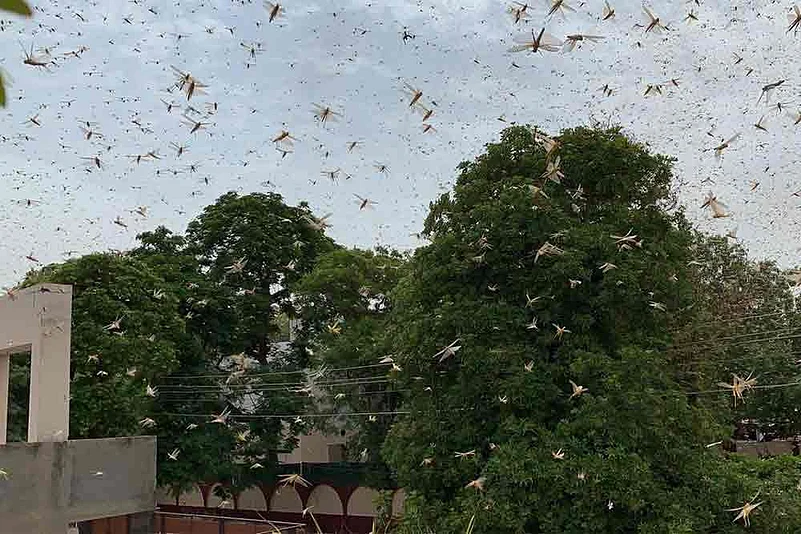A swarm of locusts, which reached Gurugram on Saturday and now headed towards Faridabad and Palwal, will pose a big threat to safe flying of aircrafts around the Delhi airport, claim experts.
“On Saturday, around noon, local administration informed us about the sighting of locusts near Dwarka Expressway, which is close to the Indira Gandhi International Airport. Pursuant to that, precautionary orders have been issued to pilots to be watchful,” said Vineet Gulati, Member, Air Navigation Services.
Aviation experts say that locusts fly up to 3,000 feet high and can cause huge inconvenience in landing and taking off of an aircraft. However, at cruise level, which is at 10,000 feet, there is no problem.
“If a pilot notices locusts while he is trying to land at a particular airport, he can abort the landing and fly to an alternate airport. He cannot do anything else,” said Captain SS Panesar, Ex-director, Flight Safety and Training, Indian Airlines.
“If locusts enter into the engine through engine inlet, they can stall the engine, which can even cause a plane crash. Since they fly only during the day time, it is easy for pilots to keep a watch on them,” he added.
Last month when locusts crossed bordering districts of Jaisalmer and Bikaner and moved eastwards into Rajasthan, the Directorate General of Civil Aviation (DGCA) had issued an operational circular on May 29, highlighting their impact on aircraft operations.
“Almost all air intake ports of the aircraft will be prone to ingestion in large numbers if the aircraft flies through a swarm. (Areas like engine inlet, air-conditioning pack inlet etc),” it said.
Issuing a caution to pilots, it said, “Pilot and static sources can also get partially or fully blocked while flying through Locust swarms. Blocked pitot and static sources lead to erroneous instrument indications, especially unreliable airspeed and altimeter indications.”
“A large number of swarms can even sit on the windshield and blur the pilots’ vision. If the pilot uses wiper, it can crush them and smear the windshield with their blood and body parts,” Panesar said.
















